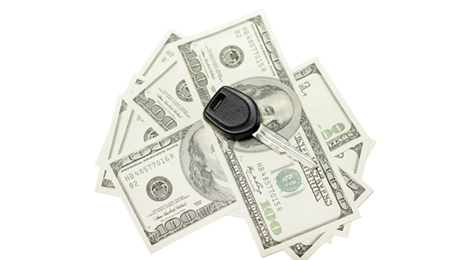Auto Defaults Tick Up 3 Basis Points

By subscribing, you agree to receive communications from Auto Remarketing and our partners in accordance with our Privacy Policy. We may share your information with select partners and sponsors who may contact you about their products and services. You may unsubscribe at any time.
NEW YORK –
Although auto loan defaults are drifting slightly upward, analysts who generate the S&P/Experian Consumer Credit Default Indices aren’t ready to hit the panic button.
Analysts from S&P Dow Jones Indices and Experian found that the February auto loan default rate increased 3 basis points on a sequential and year-over-year basis to land at 1.06 percent.
While the auto default rate is up just 4 basis points since the beginning of the year, the reading has moved up only 14 basis points since analysts spotted the three-year low at 0.92 percent in April of last year.
Two other credit categories the firms track to produce the S&P/Experian Consumer Credit Default Indices, a comprehensive measure of changes in consumer credit defaults, continued to show a slight upward trend.
The bank card default rate led the way, reporting an increase of 23 basis points to 2.84 percent, the highest reported rate since July of last year. This movement also marked the first year-over-year increase in the bank card default rate since July 2010.
The second mortgage default rate increased by 2 basis points to settle at 0.66 percent.
Subscribe to Auto Remarketing to stay informed and stay ahead.
By subscribing, you agree to receive communications from Auto Remarketing and our partners in accordance with our Privacy Policy. We may share your information with select partners and sponsors who may contact you about their products and services. You may unsubscribe at any time.
However, the national composite rate remained flat, producing a default rate of 1.12 percent in February.
The first mortgage default rate decreased for the first time since July of last year, dipping by 2 basis points to 1.00 percent from the previous month.
“The combination of a strong February employment report and continued low oil prices all point to a buoyant economy with optimistic consumers,” David Blitzer, managing director and chairman of the index committee at S&P Dow Jones Indices.
“The recent, though modest, increases in default rates for bank cards and auto loans suggest that consumers are becoming more free-spending. Mortgage default rates, the largest component in the national index, held steady and prevented a rise in the national numbers,” Blitzer continued.
While some readings, including auto, are on an upward drift, they’re still well away from all-time highs. For example, the auto loan default rate stood at 2.50 percent back in February 2010 when the economy was still floundering from the recession.
“A true test of consumer credit quality and the prospects for future default rates will come in the second half of 2015 by which time the Fed will most likely have begun to raise interest rates,” Blitzer said. “Given current low levels of default rates and low debt service burdens, there are no concerns of a consumer credit crisis any time soon.”
Looking geographically, analysts determined the five major cities reported mixed results in February with two cities showing lower default rates.
Miami reported a default rate of 1.17 percent, a decrease of 18 basis points, its largest decrease since last September. Los Angeles reported a decrease for a second consecutive month at 0.83 percent, down 1 basis point.
Dallas continued its trend for the fifth consecutive month with a 1.17 percent default rate, an increase of 7 basis points. New York posted its third consecutive increase with a reported rate of 1.14%, up 16 basis points from its historic low registered last November.
Chicago also saw its default rate increase to 1.18 percent, an increase of 3 basis points from the previous month.
Jointly developed by S&P Indices and Experian, analysts reiterated the S&P/Experian Consumer Credit Default Indices are published monthly with the intent to accurately track the default experience of consumer balances in four key loan categories: auto, bankcard, first mortgage lien and second mortgage lien.
The indices are calculated based on data extracted from Experian’s consumer credit database. This database is populated with individual consumer loan and payment data submitted by lenders to Experian every month.
Experian’s base of data contributors includes leading banks and mortgage companies and covers approximately $11 trillion in outstanding loans sourced from 11,500 lenders.


